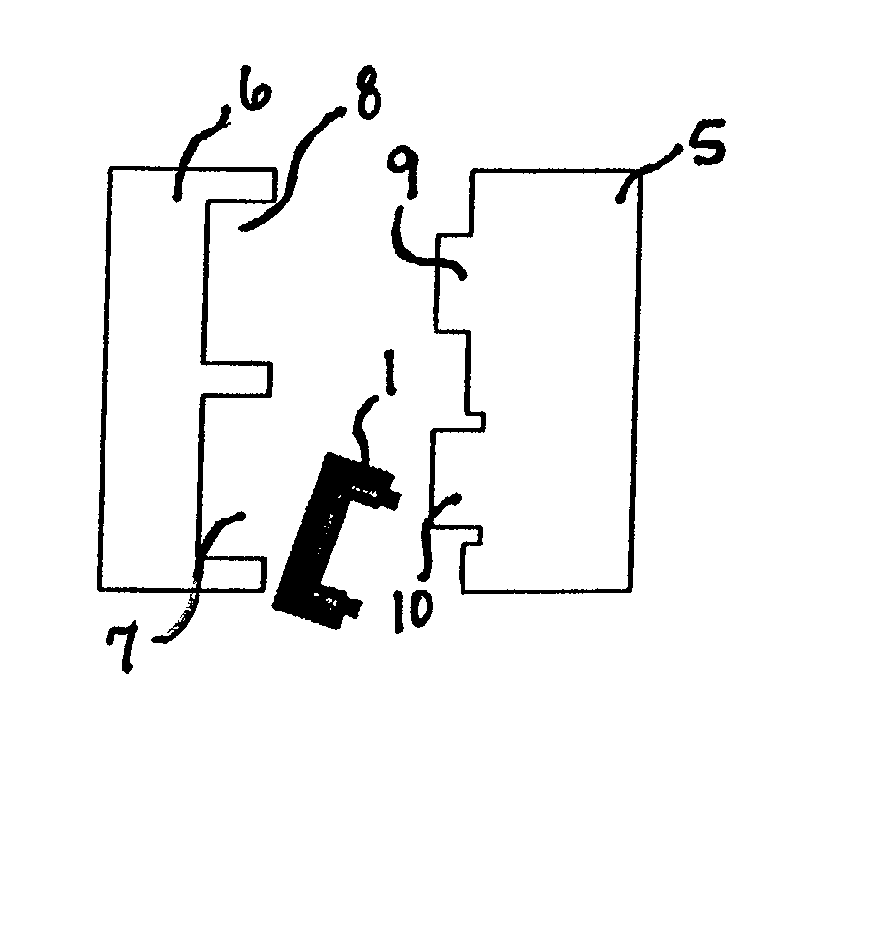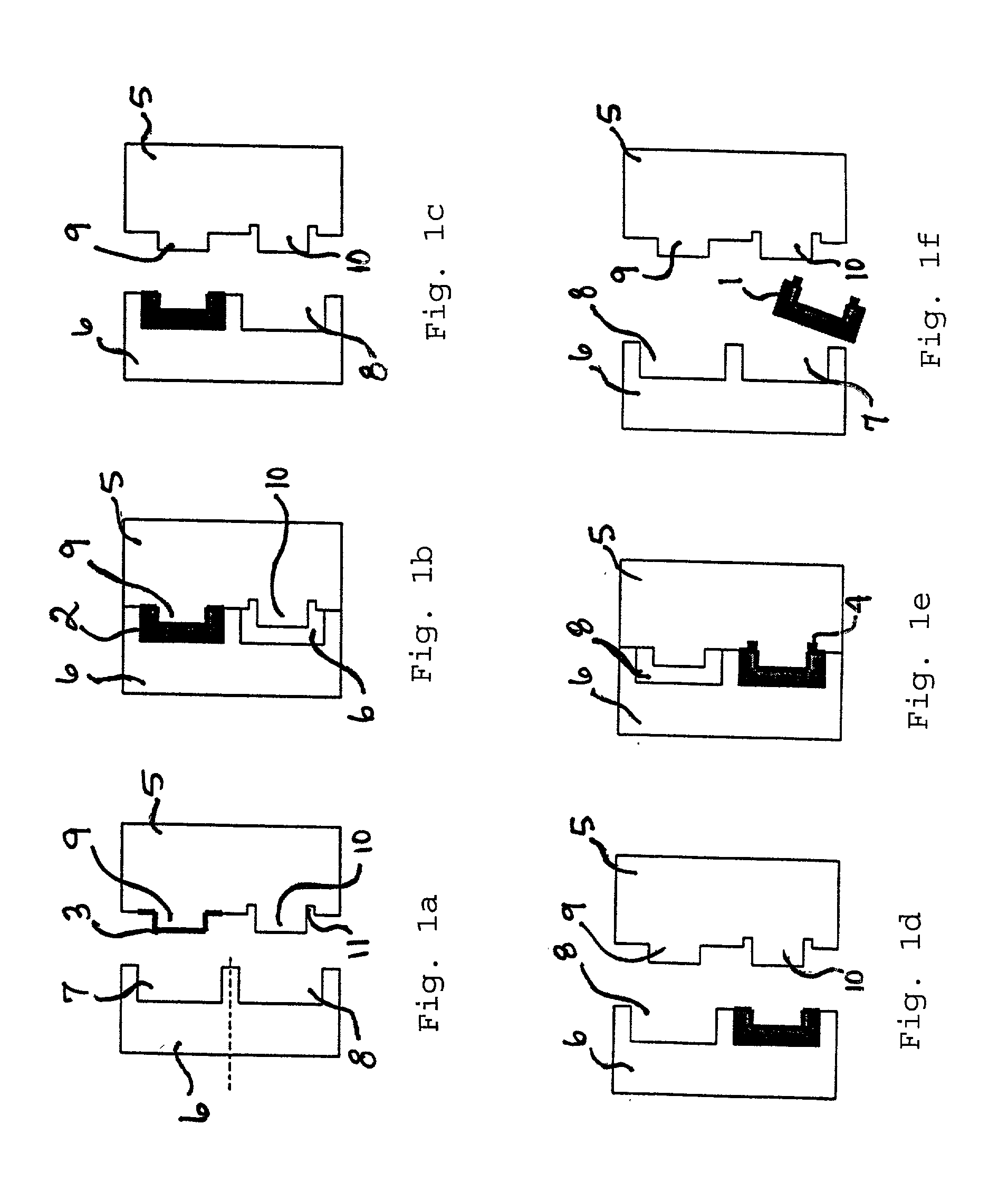Shield can
a shielding can and shielding technology, applied in the field of shielding cans, can solve the problems of small scratch marks on shielding cans, high logistic costs, and clear risks
- Summary
- Abstract
- Description
- Claims
- Application Information
AI Technical Summary
Problems solved by technology
Method used
Image
Examples
Embodiment Construction
[0014] The term "electronic equipment" includes portable radio communication equipment. The term portable radio communication equipment includes all equipment such as mobile telephones, pagers, communicators, i.e. electronic organizers, smartphones or the like.
[0015] The shield can 1 of the present invention and as shown in the enclosed FIGS., comprises a plastic housing 2, a conductive inlay 3, placed in a recess of the plastic housing 2 and a conductive gasket 4 in electrical contact with the conductive inlay 3. In other embodiments (not shown) the conductive inlay is placed on the opposite side of the plastic housing 2.
[0016] The conductive inlay 3 is a foil, a cloth or the like. If a foil is used it will normally be made of a plastic comprising an electrically conductive layer. It is also possible to make the foil of a conductive material, having no separate layers. If a cloth is used it will at least partly have threads of a conductive material or threads covered by an electric...
PUM
| Property | Measurement | Unit |
|---|---|---|
| conductive | aaaaa | aaaaa |
| electrically conductive | aaaaa | aaaaa |
| elastomeric | aaaaa | aaaaa |
Abstract
Description
Claims
Application Information
 Login to View More
Login to View More - R&D
- Intellectual Property
- Life Sciences
- Materials
- Tech Scout
- Unparalleled Data Quality
- Higher Quality Content
- 60% Fewer Hallucinations
Browse by: Latest US Patents, China's latest patents, Technical Efficacy Thesaurus, Application Domain, Technology Topic, Popular Technical Reports.
© 2025 PatSnap. All rights reserved.Legal|Privacy policy|Modern Slavery Act Transparency Statement|Sitemap|About US| Contact US: help@patsnap.com


